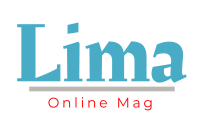Access management enables organizations to control and manage user access across systems, files, networks, applications, and other resources. The plan establishes one digital identity for each user, ensuring they are authenticated and authorized to use the system. It also monitors users’ access levels and permissions as they interact with the organization. This helps organizations prevent unauthorized access to sensitive data or cyberattacks.
Security
Managing user access to systems and data is vital to reducing security risk. IAM solutions can help you strengthen security by implementing policies that limit user access to sensitive resources and applications. Access management solutions also help you meet compliance requirements, especially with the influx of stringent data and privacy regulations. They provide centralized management of user identities and access rights and automate policy enforcement and auditing. For example, most access management solutions support Single Sign-On (SSO) capabilities, allowing users to access multiple systems and services using a single set of credentials. This eliminates password sprawl and improves the user experience while strengthening security by preventing the unauthorized sharing of privileged credentials across the organization. IAM solutions can also ensure that users are adequately de-provisioned when they leave the organization or transfer to a new role within the company. This prevents orphaned accounts that hackers can use to steal user credentials.
Compliance
Access Management Solutions help secure enterprise IT infrastructures by ensuring that only the right users can access the right resources. This helps companies meet compliance requirements and protects business data from cyberattacks and other security threats. IAM systems also allow administrators to implement role-based access control (RBAC) to regulate user access to corporate networks and IT systems based on specific job roles, which define their level of responsibility within the organization. For example, HR employees might be granted access to payroll and salary files, while IT staff may need read-only permissions for these duplicate files. Organizations need visibility into user access configurations and activity to manage access rights effectively. This requires a strong system that can easily monitor and track changes in user accounts, Active Directory(r), Group Policy, and other critical data sources. A good access management solution will have a high-performance database that stores user and file access information. This database can help admins quickly identify access changes and produce audit-ready reports to demonstrate compliance and reduce risk.
Flexibility
Depending on the needs of your business, you might need to provide access to resources, including applications, systems, and data, only to specific individuals or groups. An IAM solution should help you determine and apply these access restrictions across the enterprise. This usually means defining and implementing permissions policies and using automation to simplify and streamline user provisioning and account setup processes. These solutions should also help you instantly view and update evolving access roles and rights. As previously mentioned, determining the right users for access can be challenging. The best IAM solutions support a role-based approach, allowing users to be assigned only the minimum permissions they need for specific tasks or operations. In addition to the traditional roles and permissions, some IAM tools offer privileged access management (PAM) capabilities that allow administrators to set just-in-time privilege levels for specific tasks. This flexibility is a valuable tool for businesses that need to meet the needs of their end users while maintaining security and compliance.
Scalability
Scalability is the ability of a system to adapt to changing workloads and user demands. This capability can allow for rapid growth without causing performance issues. A scalable system can also automatically add, remove or reconfigure hardware and software resources to meet increasing demands. This level of automation can result in lower maintenance costs, improved user experience, and higher agility. This is important because it allows a system to respond to changes quickly and efficiently, which can increase business efficiency. It can also help ensure service availability and reduce downtime, which is critical to running a business smoothly. Scalability is a necessary part of any access management solution. However, it can take time to achieve. Prioritizing it from the beginning is essential to ensure your solution can handle growth without causing any issues.
Cost
Access management is a security mechanism that establishes one digital identity per user and maintains and monitors it throughout the user’s access life cycle. This ensures that every user can access only the resources they are authorized to access.
In addition to preventing unauthorized users from accessing systems and data, an Access Management solution controls users’ permissions within an organization. This helps to protect critical business data from cyberattacks or data breaches.
The cost of implementing an Access Management Solution depends on several factors. These include the cost of implementing and maintaining the software, external costs for installation, setup, training, and any customization required by the software vendors or systems integration specialists, and ongoing operational costs such as change management. Several tools on the market offer authentication and authorization capabilities that allow businesses to manage access to applications, networks, and systems efficiently. These features reduce the burden of password resets and help desk requests, which enables system administrators to focus on more strategic tasks that improve business efficiency.




